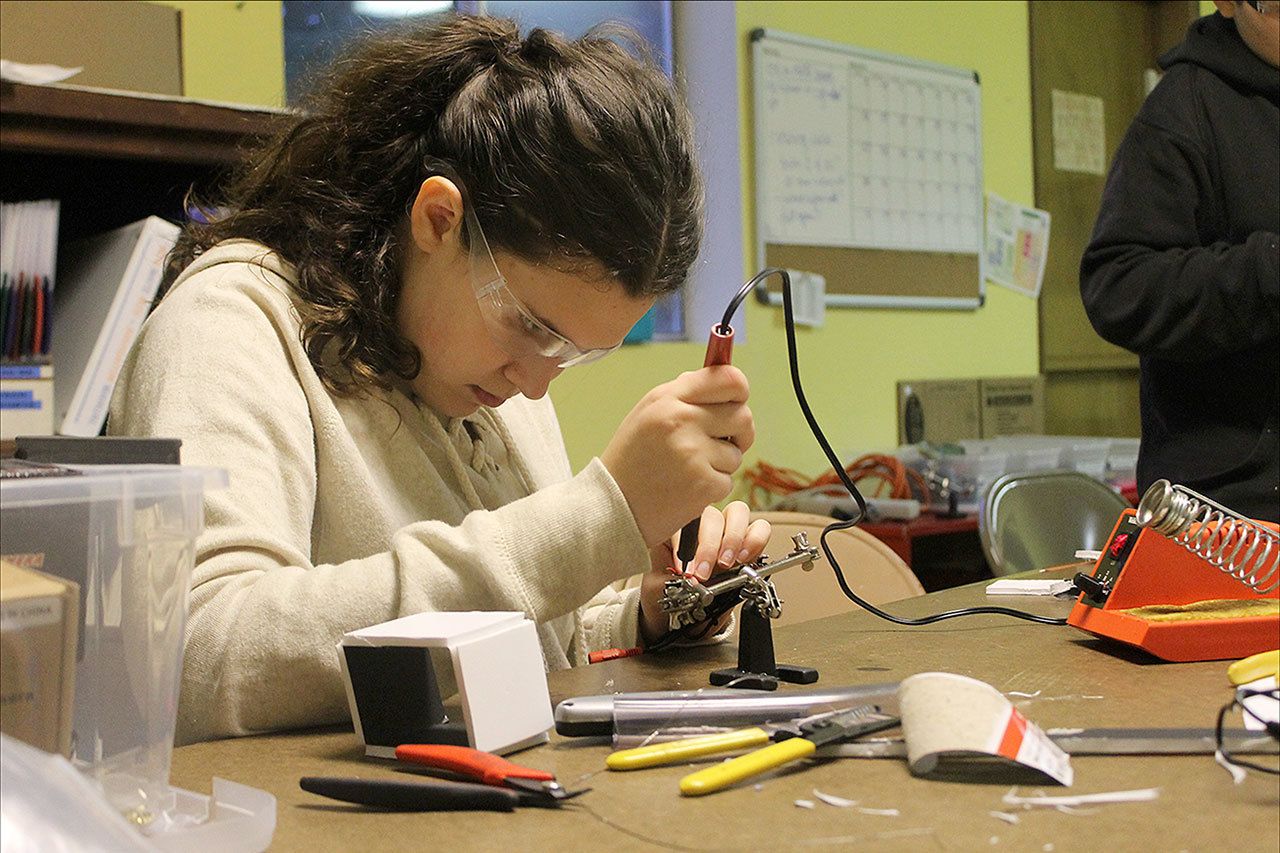South Whidbey’s Galileo ROV team will soon take a break from building an underwater robot for a chance to pluck the brains of Port of Seattle staff.
The team, consisting of five students in the seventh and eighth grades, is researching how ports use remotely operated vehicles so it can successfully complete tasks required by the Port of Long Beach in the 16th annual MATE (Marine Advanced Technology Education) International ROV Competition this summer. But it won’t be a one-way street; Port of Seattle staff will also be asking members of the Galileo team questions too. Joanna Florer, senior environmental program manager, said she is eager to see if the kids can provide innovative ideas on how underwater ROVs could expand the port’s scope of work.
“We think it’s a good relationship that will go both ways,” Florer said. “Hopefully the kids can sort of think about the types of things we do, as far as maintaining and working in a port facility, and how they can apply it to some of their uses and needs.”
In one activity-packed day on Nov. 16, the team will meet with members of the Seaport Alliance, environmental and engineering staff, Fishermen’s Terminal managers, and lastly the dive team and police unit at the port’s headquarters at Pier 69. Galileo ROV is part of Atlantis Steam, a club that focuses on science, technology, engineering, arts and mathematics (STEaM). The dive team and police unit is the only department at the port that utilizes underwater ROVs for activities such as bomb sweeps under piers.
“The fact that you have professionals, engineers, divers and police units who are spending seven hours of their day free to this team shows the extraordinary lengths that people will go to help kids in STEM [science, technology, engineering and mathematics] and to start these conversations, and also highlight all of the opportunities out there,” said Ashley McConnaughey, lead mentor.
By learning the ins and outs of the port, and how remotely operated vehicles fulfill a variety of required jobs, the team will be better prepared for the international competition at the Port of Long Beach, which is the second largest in the U.S. and one of the largest in the world. Tasks at the competition will include collecting samples for environmental contamination analysis, mapping where cargo has gone off a ship, identifying hazardous materials and environmental cleanup.
The team must first advance beyond the MATE ROV Pacific Northwest Regional in Spring 2017 to qualify for the international competition. During the coming months, the team will build a 22-pound robot that is 48 centimeters in diameter.
McConnaughey said that in addition to their research with the port, the team will also practice how to conduct themselves verbally. Judges in the regional and international competitions evaluate teams on oral presentations as well.
It’s the second time in two years the team has organized a meeting with scientists, engineers and professionals; they video chatted with scientists from the Johnson Space Center’s Neutral Buoyancy Laboratory in Houston in March 2016.
Three of the five members gathered for a meeting on Wednesday night. They included eighth-graders Caleb Burns and Sophia Paczynski and seventh-grader Shianna Baker. Also on the team are eighth-grader Leanne Robbins and seventh-grader Kalea Staats.
Paczynski said that she’ll focus on learning what it’s like to work in a port on Nov. 16 and how daily operations occur for a better understanding of what their mission will be at the international competition. Burns is eager to find out whether it’s rare or not to use ROVs at the Port, and whether they prefer the robots over divers to complete tasks.
The meeting could be also be a sneak peek of what Burns hopes his career might be someday as an electrical engineer.
“We get to learn more about how you can use ROVs in the real world,” Burns said. “You get to talk to professionals that have built a lot of things and are really smart.”
The three members share a common passion for robotics.
“We’re all friends and we all get along here,” Baker said. “After school, it’s a time where we get to hangout with friends while doing something we love.”



